Handwriting, or penmanship, is the art of writing with the hand and a writing instrument. It is typically classified as part of language arts, as an ability to write legibly is crucial in many career paths. Today, however, due to the widespread use of computers and word processors, penmanship is often neglected completely or considered more of an art form. We believe it is still an important discipline.
Different styles of writing (also called hands or scripts) have been popular at different times and in different countries. One of the reasons for this is differences in approach of transitioning from manuscript to cursive—and some people avoid transition altogether and teach cursive first! Basically, there is no "right" way and you'll have to choose what you want to teach or what will work best for your student. There are several styles predominant in home school curricula:
Modern Slant Print (or D'Nealian) *
Since the early sixties, D'Nealian Script has been one of the primary methods of handwriting instruction in North America. This method starts with manuscript letters at a slant, which proponents say makes transition to cursive easier. The cursive letters are simple, and the goal is to avoid lifting pencil (or pen) from paper, which helps avoid letter reversals.
Samples:
|
Manuscript
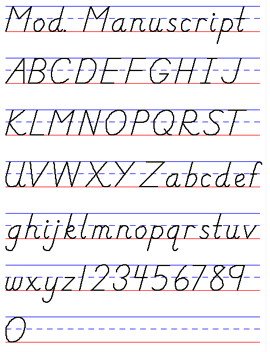 |
Cursive
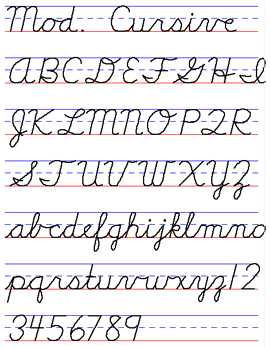 |
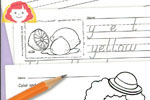 |
Evan-Moor Daily Handwriting Practice Grades 1-6
There are only four Evan-Moor handwriting books, each designed to be used primarily as extra practice and reinforcement. Two of the four are Modern Manuscript and Cursive. The other two are Traditional Manuscript & Cursive. There is limited teacher support to help with instruction.
|
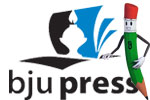 |
BJU Handwriting Grades K-6
The BJU Handwriting series uses a handwriting style actually developed specifically for the Bob Jones program by on-staff researchers. The manuscript for early grades is very similar to D'Nealian, but there are some significant differences in the formation of several capital letters.The student books are full color and consumable, and you could easily use them without buying the teacher guides.
|
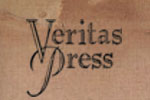 |
Veritas Press Classically Cursive Grades K-4
Veritas Press Classically Cursive teaches the specific D'Nealian method (cursive only), and does a great job of introducing penmanship and Christian doctrine at the same time through a series of Bible- and catechism-based copywork exercises. Worktexts are spare, and teacher support is limited; kids are expected to practice a lot.
|
New American Cursive
This was designed specifically to be used to teach cursive handwriting before printing. Essentially a modified form of the D'Nealian script in appearance, New American Cursive eliminates the translation difficulty students face when switching from print to cursive. Creator Iris Hatfield has had over 35 experience as a handwriting instructor, and is convinced this non-traditional order of instruction is best for a variety of reasons, including the fact that cursive is less demanding on a child's motor skills and encourages neurological connections in the brain that develop fine motor skills. Hatfield's books are published and promoted exclusively by Memoria Press.
Product Sample:

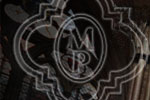 |
Memoria Press Copybooks & Penmanship Grades K-3
The authors of Memoria Press Copybooks & Penmanship understand that practice, not instruction, is the essential ingredient of a good handwriting education. The copybooks use classic poetry and Bible verses to teach manuscript, while New American Cursive is more fun-oriented and teaches cursive.
|
Zaner-Bloser *
Introduced early in the 20th century, this method has a long and respected history. It typically starts with "ball and stick" manuscript letters and continues on to teach traditional cursive. Adherants to this method point out that the slant of the Modern manuscript is more difficult than the perpendicular stick form. But then the transition to cursive can be trickier. The full Zaner-Blosser cursive looks more "loopy" than is typically desired, but the simplified form in more common use has an elegant look, without being over-difficult to learn.
Samples:
|
Manuscript
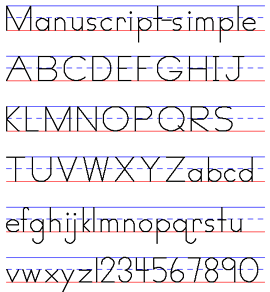 |
Cursive
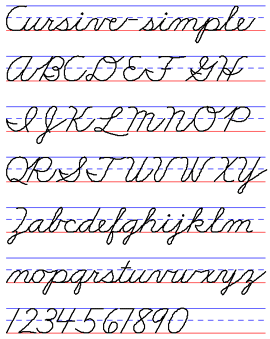 |
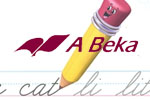 |
A Beka Penmanship/Creative Writing Grades K-6
A Beka Penmanship starts K4 students writing cursive from the outset. There are manuscript options at every level, but the emphasis is on cursive in the Zaner-Bloser style (not the simplified version!); exercises include copying Bible verses and writing creative sentences and paragraphs.
|
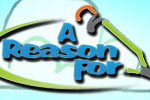 |
A Reason for Handwriting Grades K-6
Using a simplified Zaner-Bloser style, A Reason for Handwriting has kids practicing their penmanship and printing skills by memorizing and writing out verses from The Living Bible. The consumable worktexts are full color and engaging, and the content is edifying.
|
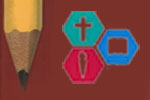 |
CLP Handwriting Grades K-4
CLP Handwriting teaches the unmodified simplified Zaner-Bloser style using King James Version Bible verses and Bible-themed passages. These are pared-down, black-and-white worktexts with no teacher guides; many users find the lines too small for their children to use.
|
 |
Horizons Penmanship Grades 1-5
Like Horizons Math, Horizons Penmanship uses a "practice, practice, practice" approach, inundating kids with 160 lessons per book. The course is built around the Zaner-Bloser style, and uses Bible verses, character-building stories, and historical essays for copywork exercises.
|
Getty-Dubay Italic Handwriting *
The letters in the Italic method are similar in appearance to Modern Slant Print, but they are formed differently, more like easy calligraphy. The "basic" manuscript is taught at a slight slant with elliptical strokes and shapes (the way the wrist naturally moves). The cursive form is nearly identical—you just add entrance and exit strokes to join letters. This makes transition very simple. And the style looks good without requiring much serious effort. The main drawback for most people trained this way is difficulty in reading the other styles.
Samples:
|
Manuscript
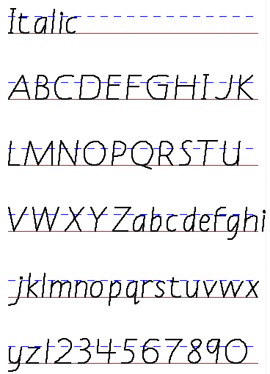 |
Cursive
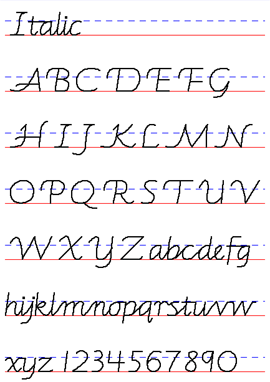 |
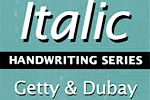 |
Getty-Dubay™ Italic Handwriting Grades 1-6
If you're looking to teach your kids a form of cursive that anyone can write and truly anyone can read, these are the books for you. The Getty-Dubay Italic Handwriting method is legible, easy to teach, and far less stressful on kids than other more traditional styles.
|
Handwriting Without Tears *
Developed by Jan Olsen in the late 1970s, this is one of the more unique styles and courses. Kids are taught a fairly blocky script (the wide angles help keep them from sloppiness and confusion) through a variety of multisensory approaches, including playtime with shaped blocks, listening to songs, conversation, "imaginary writing," and letter stories, to name a few. Its cursive is straight up and down—not angled—for ease of transition from manuscript. The "without tears" part of the title refers both to the fact that the penmanship method is easy for kids to master, and to the fun nature of the activities and assignments.
Samples:
|
Manuscript
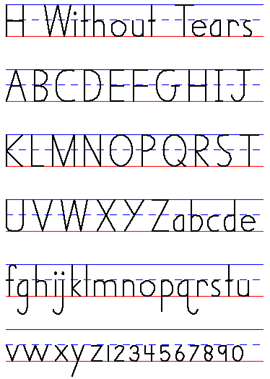 |
Cursive
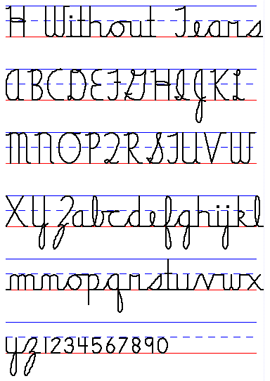 |
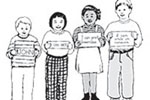 |
Handwriting Without Tears Grades K-6
Handwriting Without Tears is not a curriculum we carry, but we are willing to sell it used. It's a multi-sensory approach to handwriting instruction for very young students using a unique blocky style of the author's own design.The course was written specifically to appeal to non-Christian audiences.
|
* (You can see samples of these and other methods by clicking here—samples were created using a software program called Startwrite, which we carry)
Spencerian Method
The Spencerian Key to Practical Penmanship was originally published in 1866 and introduced business writing to North America. The Spencerian Method was taught in schools until the mid-20th century, when typewriters rendered it obsolete and it was gradually replaced with the simpler and less elegant Palmer style. Spencerian is a lovely style of handwriting—the sort you admire when you open up a book that has an inscription from 100 years ago. The method itself is not that difficult, using only seven basic strokes called principles, but it requires discipline.
 |
Draw Write Now Grades K-5
The Draw Write Now books rather whimsically marry handwriting, creative writing, and drawing instruction for young students. The books are fun and full-color, but be aware that they in no way cover any of these subjects comprehensively. Use these as a jumping-off place for further practice.
|
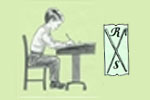 |
Rod & Staff Penmanship Grades 1-4
Before teaching kids to write letters, the Rod & Staff Penmanship books begin by having them practice the various pencil-strokes that make the letters. Once letter instruction begins, students move from ball-and-stick, to slant print, to traditional cursive. The teacher books are recommended.
|
 |
Review by C. Hollis Crossman
C. Hollis Crossman used to be a child. Now he is a husband and father, teaches adult Sunday school in his Presbyterian congregation, and likes weird stuff. He might be a mythical creature, but he's definitely not a centaur.Read more of his reviews here.
|
Did you find this review helpful?